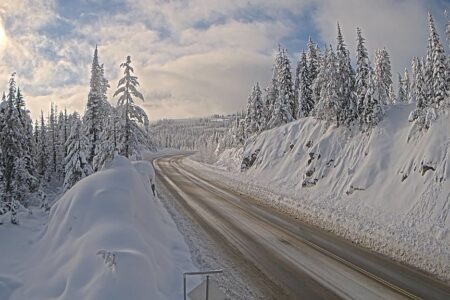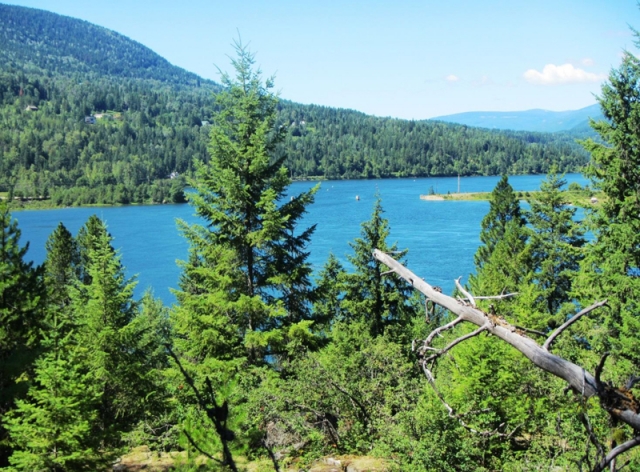Historic Agreement signed to support long-term protection of the Flathead River Valley
The Nature Conservancy of Canada (NCC) and The Nature Conservancy (TNC) have announced a multi-million dollar funding commitment to help remove major threats to British Columbia’s Flathead River Valley – a spectacular wilderness area that straddles the Canada-U.S. border.
The two leading conservation organizations will provide $9.4 million to the Province of British Columbia to help offset the costs of enacting a historic memorandum of understanding signed a year ago by BC Premier Gordon Campbell and the Governor of the State of Montana, Brian Schweitzer. That agreement permanently prohibits coal mining as well as exploration and development of oil, gas and mineral resources on nearly 400,000 acres (160,000 hectares) in southeast British Columbia. In addition, the conservation groups will assist the BC government in maintaining and enhancing high conservation standards in the natural area in order to protect the rich diversity of plant and animal life. “This is a remarkable commitment to conservation,” said John Lounds, President and CEO of the Nature Conservancy of Canada. “I want to thank Ambassador Gary Doer, Premier Campbell, Environment Minister Peter Kent and our partners at The Nature Conservancy who have worked so diligently to ensure we could protect the Flathead River Watershed – a treasure we all share.” British Columbia’s Flathead River Valley has been called the ‘Serengeti of the North’ because it supports an amazing abundance of life. Sixteen different species of carnivores and a great diversity of plants flourish in the river valley. The Grizzly Bear population here is the most abundant in the interior of North America. The BC side of the valley is largely undeveloped and is still home to the same variety of species that existed 400 years ago, including wolves, fishers, wolverines and Canada Lynx. Ungulates (hoofed animals) such as Elk, Bighorn Sheep, Moose and Mountain Goat are plentiful. The Flathead River system flows undammed from British Columbia into Montana and contains some of the purest water found in North America. The entire river basin is part a spectacular trans-boundary ecosystem that spans southwest Alberta, southeast British Columbia and northern Montana. The headwaters of the Flathead River flow through to the North Fork in Montana, feeding cold clear water downstream to support habitat for endangered Bull Trout, Cutthroat Trout and more than 20 other species of fish. “There is no other large watershed in North America like the Flathead — the richness of its waters, the abundance of its carnivores. It is a truly wild river in southern Canada. “This agreement will ensure that the Flathead will stay wild and pure for generations to come,” says biologist Richard Cannings, a member of the Nature Conservancy of Canada’s BC Regional Board. The Nature Conservancy of Canada will contribute up to $6 million towards the funding commitment and overall project costs. The largest share of that will come from the Natural Areas Conservation Program — a unique partnership with the Government of Canada. In 2007, the federal government announced an investment of $225 million in the program, which supports the work of the Nature Conservancy of Canada and other non-profit conservation organizations to protect ecologically sensitive lands, diverse ecosystems, wildlife and habitat. “Today’s announcement is another example of how we can, through partnership, achieve a shared goal, to conserve and protect our natural spaces and wildlife and leave a lasting legacy to future generations,” said the Honourable Peter Kent, Canada’s Minister of the Environment. The Nature Conservancy of Canada and The Nature Conservancy are unaffiliated. The two non-profit organizations share many conservation priorities and they have built a long-standing relationship in places such as the Flathead River Basin. Facts
- The Flathead supports 70 mammal species (16 carnivores), 270 bird species, 25 fish species and 1,200 species of vascular plants.
- The Flathead contributes to the integrity of surrounding national and provincial parks (Alberta’s Waterton Park, Montana’s Glacier National Park and British Columbia’s Akimena-Kishenina Provincial Park).
- The Flathead River was declared a Wild and Scenic River in the U.S. in 1975.
This article is a press release from the Nature Conservancy of Canada.























Comments